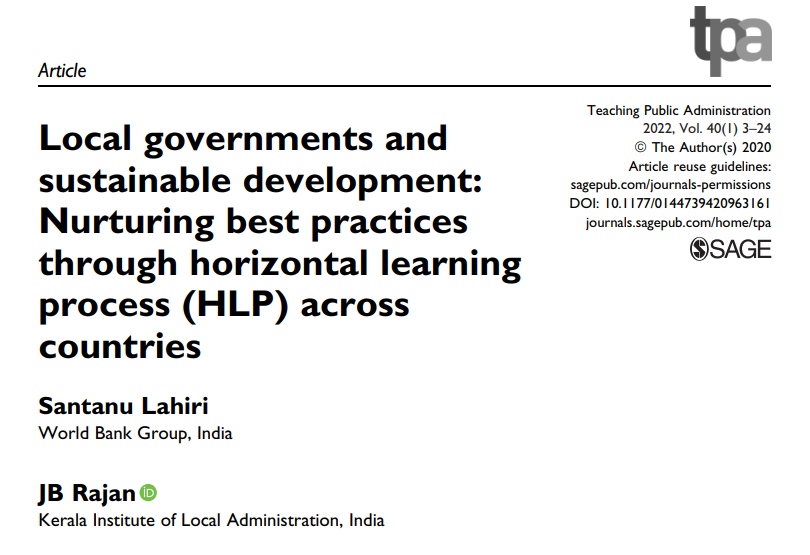-
Call Anytime
+8801711237222 -
Send Email
info@hlpfoundation.net


Call Anytime
+8801711237222Send Email
info@hlpfoundation.net
Abstract Sustainable Development Goals (SDGs) are a universal call to action to end poverty, protect the planet, and ensure that all people enjoy peace and prosperity. To maintain the pace of development, local government institutions (LGIs) in many countries have started adapting innovative good practices. These practices are being generated as an offshoot of some projects, initiated by local governments, sub-national and/or national governments. However, these innovations are generally so closely associated, and depend so much on those projects, that once the projects officially phase out, the good practices also start falling apart. Those training institutions for LGIs in Asian countries are imparting training and applying participatory methodologies like peer learning. This enhances the capacities of the functionaries of the respective LGIs. However, the learning that emerges from the good practices, that have evolved, is often missed out in these course curricula, despite the fact that both the good practices and capacity for generating good practices, exist at the local level in the form of tacit learning. The Horizontal Learning Process (HLP) helps to overcome the inherent limitations of existing training methodology by capturing, upscaling, and nurturing tacit learning based on good practices. This paper highlights the concept and salient features of HLP, its evolution, process and steps, application areas, achievements and challenges—especially in the context of the SDGs and the role of LGIs.
Background Though decentralization came to be increasingly recognized as an administrative necessity, especially for governments, in the 1990s, the word “decentralization” originated in early 18th century.1 Very rarely we observe a nation that does not place focus on strengthening of local government as part of its development agenda. (Bahl, 1999). There are exceptions like United Kingdom where the central government in various ways decreased discretion of local authorities and preventing them from increasing the quantity and quality of their services. (Booth, 2015; Jamie et al., 2009). It is hard to determine when the process of decentralization started in Asia. But it is widely agreed that, from the 1990s, the decentralization process gained momentum, and that sub-national governments have become the cornerstone of Asian economic development. (White and Smoke, 2005). Extensive decentralization processes are under way throughout Asia, including Bangladesh, Cambodia, India, Nepal, and Mongolia. (Naoyuki and Morgan PJ, 2017). Decentralization is the key toward sustainable and inclusive development in emerging Asian economies, which require continued high levels of public sector investment in areas such as infrastructure, education, health, and social services. These responsibilities, especially with regard to infrastructure investment, need to devolve increasingly to the regional government level. (Naoyuki and Morgan PJ, 2017). The improvement of services in city corporations, municipalities, and rural local governments depends upon the capability of local government institutions (LGIs), and on how they can ensure improved services and good governance. Thus, the progressive increase in fiscal decentralization gives more and more responsibilities to LGIs for ensuring good governance, in spite of whatever local government structure exists in these countries. The role of LGIs has been further enhanced with the advent of Sustainable Development Goals (SDGs). Read More